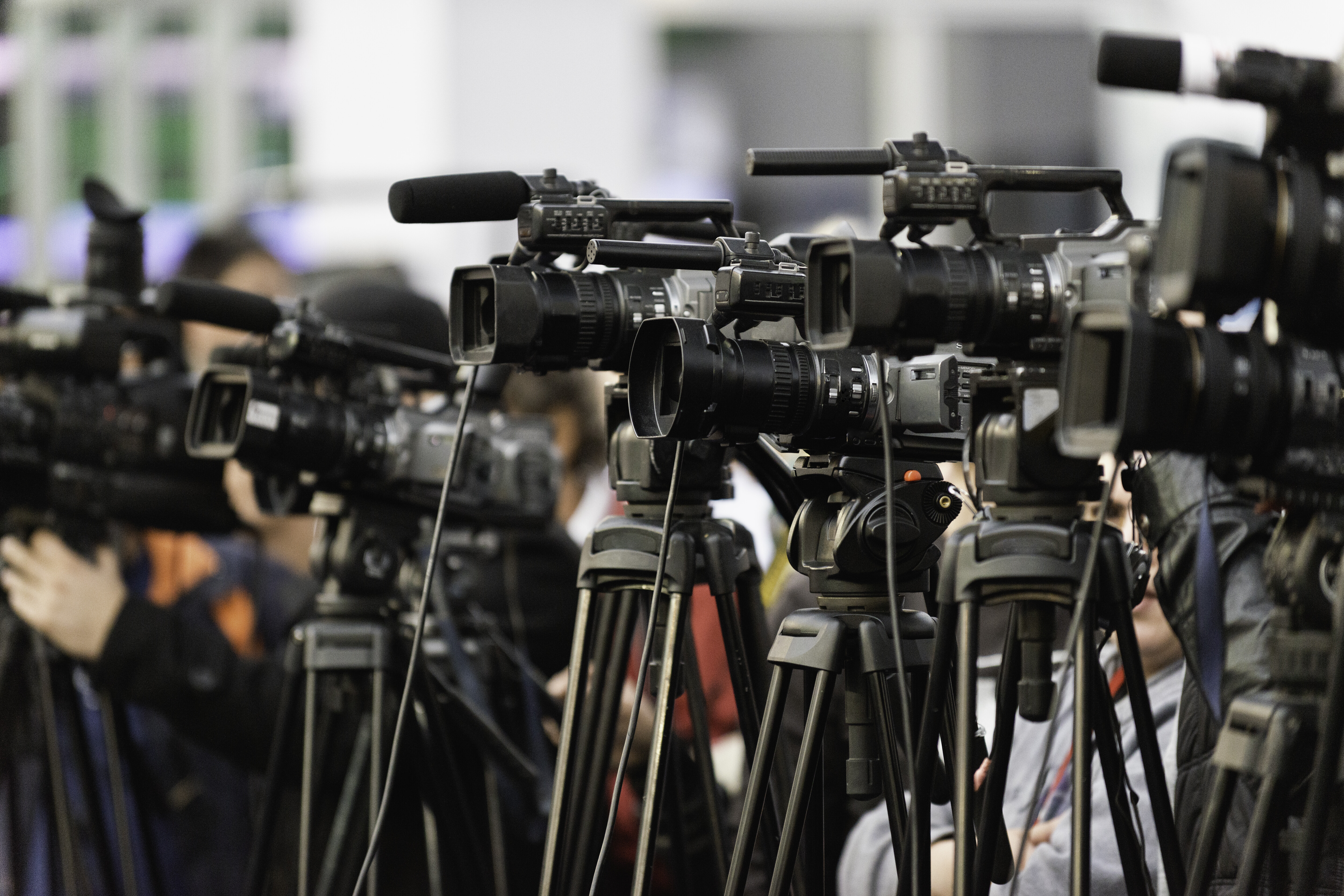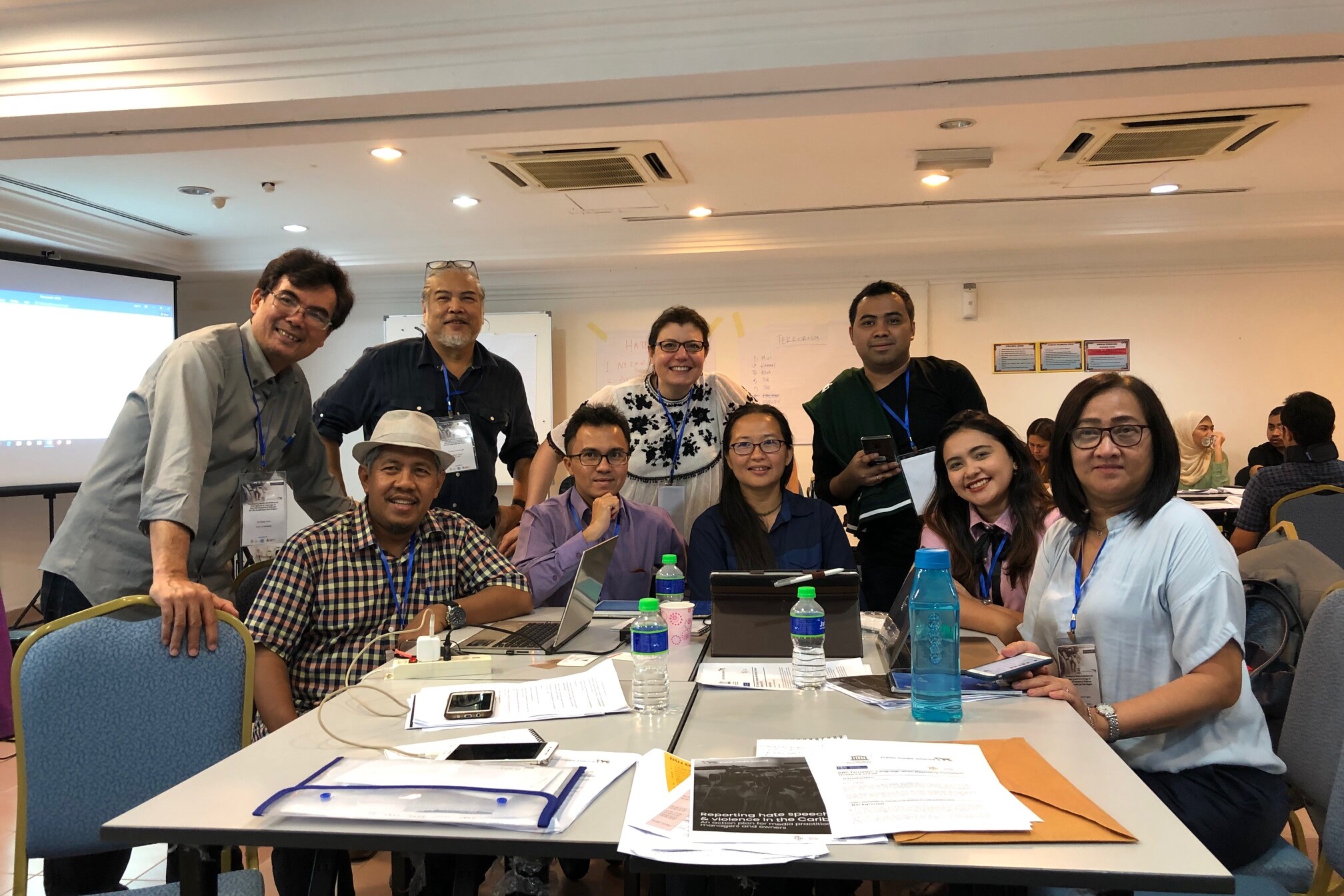By Paul Risley
Following the horrific Easter Sunday terrorist attacks in Sri Lanka, development communications expert Paul Risley explores what is meant by hate speech and how best to identify and counter it. Paul Risley recently contributed to PMA’s webinar and workshop in Kuala Lumpur to collaboratively build Media Guidelines on Hate Speech & Coverage of Acts of Terrorism & Violence for South East Asia, where the following topics were discussed in-depth.
The coordinated multiple terror attacks on places of worship and hotels in Sri Lanka, which took place on Easter Sunday 21 April 2019, shocked the island nation that has only recently emerged from decades of inter-communal violence. While the motives and identities of the bombers are still under investigation, there appear to be links to ISIS, which has now taken credit for the indiscriminate acts of violence. The intent to terrorise the population, and to incite further ethnic or communal violence is very apparent.
In the immediate aftermath of the terror attacks, Sri Lankan authorities took what is still considered an unusual step: they blocked access for virtually the entire country to popular social media sites, including WhatsApp and Facebook, in an effort to prevent the spread of false news accounts, conspiracy threats and inflammatory posts or messages. As a result, millions of Sri Lankans were automatically isolated, unable to communicate with family, friends or neighbours, unable to communicate their opinions and feelings to wider audiences.
As the Washington Post reported: “At the time, such a move might have sparked outcry from defenders of free speech, but these platforms, particularly in Asia, are now widely seen as vehicles for the unfettered spread of misinformation and enablers of extremism”.
Journalists and media professionals face increasing difficulties when defining and covering hate speech and acts of terror. The new dynamics of conflict and acts of terror, accompanied by the rapid growth of hate speech and disinformation compounded by the acceleration of digital social media platforms, pose serious challenges to journalists and professional media organisations.
Journalists and media makers have a responsibility to provide accurate and comprehensive information of potential threats and reportage of incidents. But how can they avoid sensationalism that contributes to the spread of terror and panic?
Avoiding Sensationalism
Accurate, credible coverage is crucial in stimulating informed public debate and educating the public. Professional journalists must prioritise being ‘best’ not ‘first’. Journalists can make a positive contribution to the prevention of threats to communities by responding effectively and in the public interest.
Identifying and responding to hate speech in an appropriate manner takes experience and training. When hate speech includes the direct incitement of violence or dehumanises people, it is obvious that a line of acceptability has been crossed. Yet language can be ambiguous so how can we ensure that journalists do not cross this line?
Sri Lanka’s greater region of South Asia and neighbouring Southeast Asia share many of the same multi-ethnic and shared communal societies among the mostly post-colonial countries. There are conflicts in four of Southeast Asia’s 10 countries: Thailand and Philippines both have long standing conflicts along geographical and religious lines, while Indonesia’s Aceh province and Papua island have both been home to separatist movements in conflict with Jakarta for decades. Myanmar has a range of conflicts over ethnicity, territory and religion – the latest and most serious presently, being the 2017 forced removal of the ethnic Muslim “Rohingya” people – 1 million Rohingya refugees now live in crowded camps across the border in Bangladesh, supported by the United Nations, and with few prospects for a safe return to Myanmar.
When hate speech includes the direct incitement of violence or dehumanises people, it is obvious that a line of acceptability has been crossed.
In all of these conflict areas in Southeast Asia, and in virtually all Southeast Asian countries, hate speech has been “normalised,” largely by the explosive growth in social media allowing unregulated and uncensored information, news, so-called “fake news”, doctored photos and videos to reach virtually every person and every audience.
In each of these conflict areas, polarised and divided public audiences read and listen to the “hate speech” that they choose or are targeted with; the same events are reported in sharply different accounts according to what “silo” you are part of.
So, what is “hate speech”? On the Freedom of Expression continuum, which extends from factual statements, campaign promises and opinions to politically-charged disinformation, libels and defamations – finally, “hate speech” begins when a statement becomes demonstrably false and dangerous, inciteful of violence or even criminal.
Freedom of Expression is protected to some degree, in most countries, often as a Right, in a constitution, but yelling “Fire” in a crowded movie theatre is NOT. “Hate speech” is the equivalent of “Yelling fire” and is universally considered subject to sanction and prohibition.
One of the most important recent international prosecutions of “hate speech” was by the UN International Criminal Tribunal for Rwanda in 2000, when the War Crimes Court found presenters and owners of Radio Mille Collines guilty of “hate speech” and “hate radio” that incited genocide, telling Hutus to rise up and to “crush the cockroaches” aka the Tutsi, in the days and hours before the Rwanda Genocide of 1994.
When “hate speech” leads to violence
An act of terror is the indiscriminate use of violence against civilians. Generally, a bomb placed on a bus or in a crowded marketplace where civilians are is an act of terror, and a bomb placed under a military truck or an attack on a military base is NOT considered an act of terror. Like-wise, if a national army fires a mortar into a crowded marketplace of a besieged city, as the Bosnian Serb Army did in Sarajevo in 1994, killing many civilians, that is an act of terror.
In Thailand, during and following the 2014 Coup, military authorities shut down dozens of small, local “Red” community radio stations in the rural Northeast of the country, home of the Red Shirt political movement, now effectively, the opposition. Permits were denied for radio stations, some announcers were arrested and charged with libel or inciting violence, almost interchangeably. Most of the charges were seen as “politically motivated” attempts to silence the authoritarian government’s political opposition.
Often the State is a perpetrator of “hate speech”: In Myanmar in August 2017, the Spokesman for the State Counsellor, Aung San Syu Kyi, was sharing and posting what is often termed “fake news” and hate speech, mostly from the Ma Ta Be group, on the official State Counsellor’s Facebook site and Twitter feed. In the Philippines, President Duterte’s Office has been accused of doing the same, promoting and sharing offensive and dangerous posts, putting other parties at risk.
The lesson of this is that in authoritarian controlled countries, as are most of Southeast Asia’s 10 countries, state regulators can NOT be trusted to do their jobs in preventing hate speech from spreading.
But can democracies do any better? The US, where the FCC once regulated broadcasters, has largely stopped any regulation of the tech giants. House and Senate Hearings on Facebook’s election manipulation put Mark Zuckerberg in the hot seat for the first time ever, and there is clear interest in beginning to regulate Facebook and others for the content they promote, but so far, nothing.
Could Facebook do better? In a December 2018 Radio Free Asia article, Myat Thu, a Myanmar researcher listed some things Facebook could do to combat online hate speech:
“I believe Facebook’s removal of accounts spreading hate speech intentionally is somewhat useful,” he told RFA’s Myanmar Service. “But it would be much more effective if Facebook can expose such accounts and research their [the account owners’] behavior to prevent them from resurfacing rather than just shutting down the accounts.”
“Most importantly, Facebook should invest in reporting mechanisms for users instead of waiting for the users to report the issue,” he said. “It would be the best if Facebook and the Myanmar government invested more in information and media awareness programs.”
Guidelines can help journalists and the public recognise hate speech and then remove it, or refuse it
And the UN Human Rights Commission offered a suggestion for what Facebook could do, in a November 2018 Report that found that hate speech on Facebook contributed to the violence during the forced removals of 625,000 Rohingya from Myanmar in August 2017. The Human Rights Commission said that:
“Before entering any new market, particularly those with volatile ethnic, religious or other social tensions, Facebook and other social media platforms, including messenger systems, should conduct in-depth human rights impact assessments for their products, policies and operations, based on the national context and take mitigating measures to reduce risks as much as possible.”
Guidelines for what constitutes hate speech and misinformation offer the best approach for a short-term fix for the problem with social media. Guidelines can help journalists and the public recognise hate speech and then remove it, or refuse it – but what kind of guidelines would work best?
Firstly, journalists should use what is considered the “golden rule”: for articles on ugly civil conflicts, or when reporting on alleged acts of terror, always interview three experts, not two, so as to avoid the “tit for tat” news reporting that leads to opinions rather than factual analysis. Opinions must be labelled as just that, while “analysis” is that rare quote from an expert that is well-anchored by facts.
Secondly, should guidelines be punitive? If a journalist does print misinformation, should criminal sanctions be taken? Can a journalist go to jail? Under the law that Singapore is presently considering, the answer is yes.
And finally, journalists and the public should consider WHO should offer guidelines and regulate “hate speech”. Does this include national level journalists’ organisations, government agencies with media oversight, regional governance organisations like ASEAN of the EU, or global bodies like UNESCO or the UN Human Rights Commission?
Paul Risley is a development communications consultant to United Nations agencies; he has lived in Southeast Asia for 14 years.
Header Image: Participants at the PMA/UNESCO Jakarta workshop to develop media guidelines on hate speech in Kuala Lumpur (March 2019), with Paul Risley sitting on left. Credit: PMA/Jas Chandler
Related Posts
11th April 2019
Hate by omission silence and exclusion: A Caribbean perspective
Dr Zahera Harb writes about the…
2nd April 2019
Developing Media Guidelines on Hate Speech & Coverage of Acts of Terrorism & Violence for the South East Asia Regions
A special thanks to all partners,…
10th December 2018
Reporting Hate Speech & Violence in the Caribbean
An action plan for media practitioners,…

